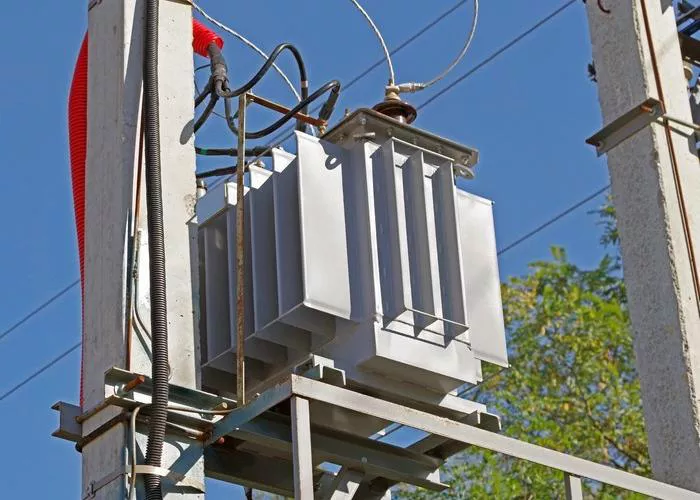Transformers are fundamental components in electrical and mechanical engineering, serving as key devices for voltage regulation and power distribution. They enable the transfer of electrical energy between circuits using electromagnetic induction, ensuring efficient power transmission. Transformers come in various designs and classifications, but they are primarily categorized into two major types: Step-Up Transformers and Step-Down Transformers. Understanding their functions, working principles, and applications is crucial for engineers, electricians, and anyone involved in power systems.
1. Step-Up Transformers
Definition and Purpose
A Step-Up Transformer is designed to increase the voltage from the primary winding to the secondary winding. This means that the voltage output on the secondary side is higher than the voltage input on the primary side. The number of turns in the secondary winding is greater than in the primary winding, leading to voltage amplification while reducing current proportionally.
Working Principle
The operation of a step-up transformer is governed by Faraday’s Law of Electromagnetic Induction, which states that a changing magnetic field induces an electromotive force (EMF) in a nearby conductor. When an alternating current (AC) flows through the primary winding, it generates a magnetic field. This field induces a voltage in the secondary winding, and since the secondary winding has more turns, the induced voltage is higher than the primary voltage.
The transformation ratio (turns ratio) is given by:
Vs/Vp=Ns/Np
where:
- Vs = Secondary Voltage
- Vp = Primary Voltage
- Ns = Number of turns in the Secondary Winding
- Np = Number of turns in the Primary Winding
Since power remains constant (excluding losses), the current relationship follows:
Is×Vs=Ip×Vp
where:
- Is = Secondary Current
- Ip = Primary Current
Thus, as voltage increases, current decreases, making high-voltage transmission more efficient by reducing resistive losses.
Applications
Step-up transformers are widely used in various industries, including:
Power Transmission: Used in electrical grids to increase voltage for long-distance power transmission, minimizing energy loss.
Renewable Energy Systems: Employed in solar power plants and wind farms to step up the generated voltage for efficient transmission.
X-Ray Machines: Required for generating the high voltage necessary to operate X-ray equipment.
2. Step-Down Transformers
Definition and Purpose
A Step-Down Transformer does the opposite of a step-up transformer—it reduces the voltage from the primary to the secondary winding. The secondary voltage is lower than the primary voltage, making it suitable for applications that require lower voltage levels. The primary winding has more turns than the secondary winding in this case.
Working Principle
Step-down transformers operate on the same electromagnetic induction principle as step-up transformers. However, since the primary winding has more turns than the secondary, the voltage induced in the secondary winding is lower. The transformation ratio equation still applies:
Vs/Vp=Ns/Np
Since power remains nearly constant, the current relationship is:
Is×Vs=Ip×Vp
Here, a decrease in voltage results in an increase in current.
Applications
Step-down transformers are crucial in various applications where lower voltage levels are needed, such as:
Household Electrical Systems: Used to reduce high transmission voltages (e.g., from 11kV or 33kV) to the standard 230V or 110V used in homes.
Electronic Devices: Employed in power adapters for laptops, mobile chargers, and other consumer electronics.
Industrial Equipment: Used in factories to step down high voltages to safe operating levels for machinery.
Railway Systems: Applied in railway electrification, where high-voltage AC power is converted to a suitable voltage level for traction motors.
Efficiency and Losses in Transformers
While transformers are highly efficient (typically 95-99%), they still experience energy losses due to various factors:
Copper Losses: Caused by resistance in the winding conductors, leading to heat dissipation.
Core Losses: Due to hysteresis and eddy currents in the core material.
Leakage Flux: Some magnetic flux does not link both windings, reducing efficiency.
Hysteresis Loss: Caused by repeated magnetization and demagnetization of the core material.
To improve efficiency, transformers use high-quality core materials, laminated cores to minimize eddy currents, and cooling mechanisms such as oil or forced air circulation.
Conclusion
Transformers play an indispensable role in modern electrical systems, ensuring efficient power transmission and distribution. Step-Up Transformers are essential for increasing voltage levels, minimizing energy losses in transmission, while Step-Down Transformers make electricity safe and usable for homes and industries. Understanding these two primary types of transformers allows engineers and technicians to design and implement efficient electrical networks, improving power reliability and safety across various applications.

